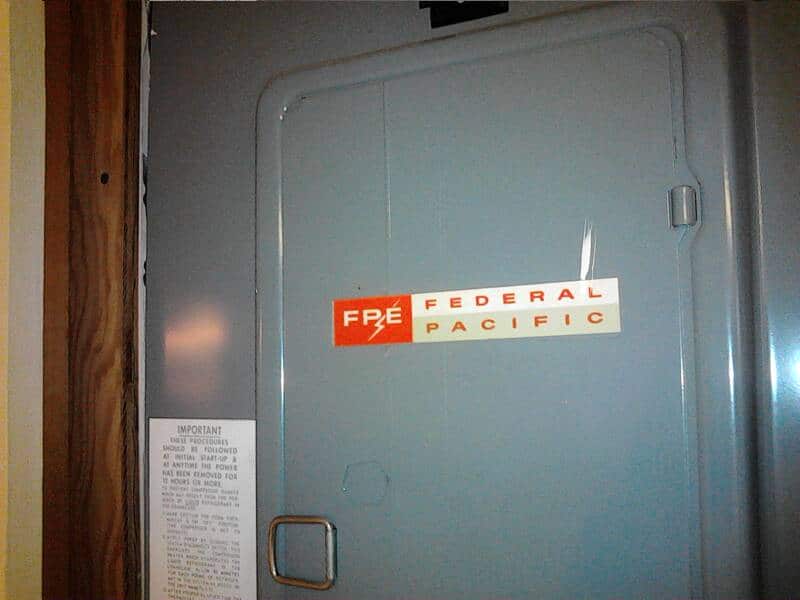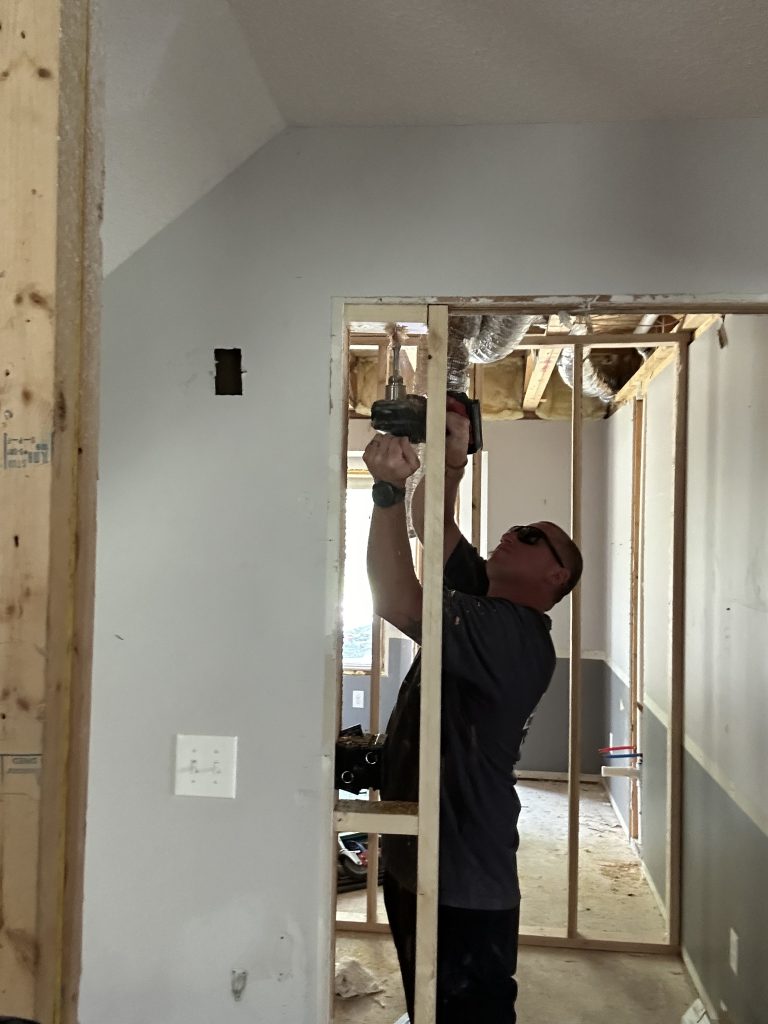Introduction
In the Wichita area, many homes built between the 1950s and 1980s still have their original electrical systems in place, and a significant number of these homes are equipped with Federal Pacific Electric (FPE) panels. While these panels were once popular due to their low cost and perceived reliability, they have since been identified as one of the most dangerous components you can have in your home. FPE panels, particularly those with Stab-Lok breakers, have been implicated in thousands of fires and numerous fatalities due to serious design flaws and unreliable performance.
In this article, we will explore the specific dangers of Federal Pacific electrical panels, why they pose a significant safety hazard to Wichita-area homes, and why replacing them is crucial for ensuring the safety of your home and loved ones.
Key Takeaways
- High Risk of Fire and Electrical Shock: Federal Pacific Electric (FPE) panels, especially those with Stab-Lok breakers, pose a significant safety risk due to their tendency to fail in critical situations, leading to overheating, fires, and electrical shocks.
- Frequent Failure to Trip: FPE breakers are known for their high failure rate, often exceeding 50%. This means they frequently fail to trip during overloads or short circuits, allowing dangerous conditions to persist.
- Regulatory and Certification Issues: FPE panels do not meet modern safety standards and were found to have obtained false certification from Underwriters Laboratories (UL), leading to a ban under the National Electrical Code (NEC).
- Impact on Home Value and Insurance: Homes with FPE panels may face challenges with insurance coverage, higher premiums, and difficulties in selling, as potential buyers may demand a discount or replacement due to the known risks.
- Replacement Is Crucial: Given the documented dangers and difficulties in repairing FPE panels, experts overwhelmingly recommend replacing them with modern, safer alternatives to protect your home and family.
1. History and Background of Federal Pacific Electrical Panels
Federal Pacific Electric panels were once a popular choice for homes across the United States, installed in millions of properties from the 1950s through the 1980s. Their popularity stemmed from their low cost and the reputation of the Stab-Lok breakers as reliable. However, as these panels aged, troubling patterns began to emerge, revealing significant safety issues.
Homeowners and electricians noticed that Federal Pacific breakers frequently failed to trip during overloads and short circuits—exactly when they were supposed to protect the electrical system. As more incidents were reported, these panels became known for their unreliability and potential danger.
2. The Design Flaws of FPE Panels
The core issue with Federal Pacific panels lies in their design, specifically the Stab-Lok circuit breakers. Unlike other breakers designed to trip and shut off power in the event of an overload or short circuit, Stab-Lok breakers often fail to perform this critical function. This failure to trip allows circuits to continue drawing electricity even under dangerous conditions, leading to overheating and potential fires.
Studies have shown that these breakers have a disturbingly high failure rate. In some cases, the failure rate exceeds 50%, meaning that more than half of the time, these breakers do not function as they should. This alarming statistic highlights the inherent danger in relying on FPE panels to protect your home’s electrical system.
3. The Safety Risks Associated with FPE Panels
The design flaws of Federal Pacific panels translate directly into serious safety hazards. One of the most significant risks is the increased likelihood of fire. Electrical fires caused by malfunctioning panels can spread rapidly and are often devastating. It is estimated that FPE panels are responsible for around 2,800 fires each year, leading to more than a dozen deaths annually.
In addition to the fire risk, FPE panels also pose a heightened risk of electrical shock. Many of these panels were installed without a ground wire, a critical component of any safe electrical system. The absence of a ground wire increases the likelihood of electrical shock, particularly in older homes where the wiring may already be compromised.
Overheating is another major issue. Stab-Lok breakers are prone to overheating, which can damage not only the panel itself but also the surrounding wiring and components of your electrical system. Over time, this overheating can degrade the system’s safety and reliability, making it even more susceptible to fires and shocks.
4. Regulatory and Certification Failures
Federal Pacific panels have failed not only in homes but also in terms of regulatory and safety standards. These panels do not meet the safety standards outlined in the current National Electrical Code (NEC). In fact, the NEC has banned the use of Federal Pacific panels due to their known risks.
A particularly troubling aspect of the Federal Pacific story is the revelation that the company manipulated safety tests to obtain certification from Underwriters Laboratories (UL), a third-party safety certification organization. UL certification is meant to indicate that a product has been thoroughly tested and deemed safe for consumer use. However, Federal Pacific deceived UL during testing, resulting in the certification of unsafe products. Once this deception was uncovered, UL retracted its certification, further confirming the dangers associated with these panels.
5. Impact on Homeowners
Owning a home with a Federal Pacific panel can have significant implications beyond just safety concerns. Many homeowners insurance companies are aware of the risks associated with these panels and may refuse to issue policies for homes that still have them. In some cases, insurers might provide coverage but at a much higher premium, or they may require the panel’s replacement as a condition of coverage.
Selling a home with an FPE panel can also be challenging. Potential buyers, informed about the risks by home inspectors, may be hesitant to purchase a home with such a significant safety hazard. Even if they proceed, they are likely to demand a lower price to cover the cost of replacing the panel, which can range from $1,500 to $4,000, depending on the complexity of the system.
Moreover, finding replacement parts for FPE panels is increasingly difficult. Since Federal Pacific is no longer in business, replacement breakers and other components are scarce. Homeowners who attempt to repair their FPE panels may find that parts are either unavailable or unreliable, further underscoring the importance of replacing these outdated systems.
6. Expert Opinions and Case Studies
Electricians who encounter Federal Pacific panels in their work overwhelmingly agree: these panels are dangerous and should be replaced as soon as possible. Many electricians refuse to perform work on homes with FPE panels unless the homeowner agrees to a replacement, citing the unacceptable risks involved.
A case from California illustrates the dangers well. A homeowner, unaware of the risks, ignored warnings about their FPE panel. The panel eventually failed during an overload, causing a fire that resulted in extensive damage to the home. While there were no injuries, the cost of repairs far exceeded what the homeowner would have paid to replace the panel beforehand.
7. The Replacement Process
If you suspect that your home has a Federal Pacific panel, the first step is to have it inspected by a licensed electrician. They can confirm whether your panel is indeed an FPE model and assess its current condition. If an FPE panel is identified, the best course of action is replacement rather than repair.
Replacing an FPE panel involves removing the old panel and breakers and installing a new, modern electrical panel that meets current safety standards. The process typically takes a few hours to a full day, depending on the size and complexity of your home’s electrical system. While the cost can range from $1,500 to $4,000, the investment is well worth it when considering the potential cost of a fire or other catastrophic failure.
Modern panels offer numerous safety features that FPE panels lack, such as better circuit protection, improved grounding, and more reliable breakers. Additionally, upgrading your panel can increase the value of your home, as potential buyers will appreciate the enhanced safety and reliability of a modern electrical system.
Conclusion
Federal Pacific electrical panels are a significant safety hazard in many Wichita-area homes. Their failure to meet modern safety standards, coupled with their documented history of causing fires and electrical shocks, makes them one of the most dangerous components you can have in your home. The risks are simply too great to ignore.
If your home has an FPE panel, it’s crucial to act now. Don’t wait for a catastrophe to strike—take proactive steps to protect your home, your loved ones, and your investment. Integrity Trade Services is here to help. Our team of licensed, experienced electricians specializes in inspecting and replacing outdated electrical panels. Contact us today for a comprehensive inspection and to discuss the safest, most reliable options for upgrading your electrical system. The cost of replacement is a small price to pay for the peace of mind and safety that comes with a modern, code-compliant electrical panel.
Frequently Asked Questions
- Q: How can I tell if I have a Federal Pacific panel? A: Look for the “Federal Pacific” or “Stab-Lok” labels on your electrical panel. If you’re unsure, a licensed electrician can help identify it.
- Q: Can I repair my Federal Pacific panel instead of replacing it? A: While repairs might be possible, they are not recommended due to the inherent risks. Replacement is the safer and more reliable option.
- Q: How much does it cost to replace an FPE panel? A: Replacement costs typically range from $1,500 to $4,000, depending on the size of your home and the complexity of your electrical system.
This article is a collaboration between Integrity Trade Services and OpenAI’s ChatGPT. Created on August 22, 2024, it combines AI-generated draft material with Integrity’s expert revision and oversight, ensuring accuracy and relevance while addressing any AI limitations.



